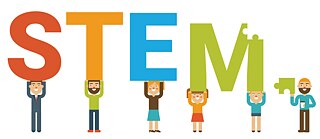Literature for children and teens today
Of refugees, racism, and poverty (Part 3)

Racism/everyday racism
Some current teenage literature picks up the topic of racism, with plots focusing on brutal attacks on migrants and asylum seekers. These stories are told not only from the victims’, but also from the perpetrators’ perspectives. For example, Clémentine Beauvais’ teenage novel Piece of dirt (2015) describes a brutal attack by French teenagers on a dark-skinned girl. The deed is told from the perpetrators’ perspective, jaded Parisian upper-class teens who skip school one day as they try to mourn a friend who died in an accident. They are arrogant, they feel superior, and they enjoy bullying their environment. Despite their wealth and spacious apartments and houses, they blame migrants for many of the problems in their country. The author does not resort to the usual crop of lower-class right-wing extremists who badmouth foreigners due to their own lack of education, but rather shows that well-educated teenagers with great opportunities in life can also tend towards xenophobic attacks. They randomly encounter a dark-skinned girl, spot lice in her hair, and kidnap her on a whim. They take her to the nearby apartment of one of the teens, whose name is Gonzaque, tie her up, and debate what to do with her. They end up shaving her hair, beating her, and taking her down to the basement in an elevator where they abandon her, still tied up. The deed is perpetrated with eerie, emotionless, and almost bored cold-bloodedness. Only one of them has scruples and ends up leaving the apartment to distract the neighbors from any screams they might hear. The victimized girl represents the fates of other tortured and beaten migrants. She remains anonymous and does not confront one of her torturers until three years later. The teenagers are arrested and slapped with prison sentences despite their wealth and influence. Racism, in particular everyday racism, as well as movements such as ‘Black Lives Matter’, are also topics of teenage novels, predominantly in translations from American English, such as works by Jason Reynolds and Angie Thomas about everyday US racism. An example from the German-speaking area is Eva Rottman’s Mats and Milad, or news from the butt of the world (2021). This novel revolves around the two teenagers Matilda, who goes by Mats, and Milad. Having recently moved to a small town from Berlin, Mats feels alien. She encounters Milad who is standing on train tracks without noticing an approaching train. Mats acts immediately to save his life, even as Milad still thinks that he is in control of the situation. The teenagers become friends, they fall in love, and experience racism and exclusion because Milad’s family is from Lebanon. Uticha Marmon’s 2020 novel When We Became Eagles shows how easily a group of children can fall victim to exclusion and racism in our modern day.Environmentalism, nature conservation, and climate protection: climate activists are taking over the literary world

Teenage novels address the topic in a more complex and global way, without offering the readers any specific solutions. In Katja Brandis’ novel White Zone - in the Shadow of the Jungle, teenage protagonists come to the fore as they resort to illegal means to champion nature conservation and environmentalism, which also raises the question of how far activism is allowed to go. In Lucas Erler’s novel Burning water (2014) about fracking, American teenagers also break the law in pursuit of their cause.
Disability
With Steinhöfel’s novel Rico, Oscar, and the Deeper Shadows (2008), inclusion and heterogeneity entered children’s and teenage literature, using new narrative patterns. Cognitive impairment, autism, Asperger’s, or Down syndrome are integrated into the plot as simple facts of life. Children with disabilities are protagonists and first-person narrators, embedded in heterogeneous groups, and apparently accepted. They are confronted with everyday problems; they have friends. That has not always been a matter of course in children’s and teenage literature. Until the 1970s, research observed “a stereotypical depiction of certain representations” (cf. primarily Reese, 2009, p. 4, Nickel 1999). Disability is portrayed as a plight which the afflicted bear patiently, knowing that God sees them and that everything happens for a reason (Reese, p. 4). Other characters, such as Klara in Johanna Spyri’s Heidi, are cured by the end of the story after having spent a life of meek acceptance of their disability. Peter Härtling’s 1973 That was Hirbel marked a turning point as the first German-language novel on the children’s and teenage market that revolved around a boy with a mental disability (cf. von Glasenapp, 2014). The novel’s subtitle reads How Hirbel ended up in a home, why he’s different from others, and whether he can be helped. Härtling’s brutally honest representation, the book’s great literary merit, and its critique of society’s handling of people with disabilities did not become a “model of literary narration about child protagonists with disabilities” (von Glasenapp, 2014, p. 11). Instead, the next cohort of books of this genre rather focused on integration, such as Max von der Grün’s novel Suburban crocodiles (1976), which propagates a (utopian) community in which the wheelchair-bound protagonist helps solve a case. Representations of cognitive and physical disability in children’s and teenage literature have changed since Peter Härtling’s That was Hirbel. Diversity is considered an opportunity. Child and teenage protagonists with disabilities have been given a voice; they operate in a social environment and find acceptance. Novels such as My Friend Lars (German version published in 2019) by Iben Akerlie, or Stephanie Höfler’s Helsin Apelsin and Her Bouts of Craziness (2020) by, have set new accents. The originally Norwegian children’s novel My Friend Lars describes the inner conflict of a girl who is supposed to take care of a new student in class, Lars, who has Down syndrome. At the same time, she wants to belong to a peer group of popular students who make fun of Lars because of his disability. Akerlie does not gloss over struggles, but traces inner and outer conflicts as both Amanda and Lars are at the verge of puberty. Akerlie widens the lens beyond the disability itself. Höfler’s children’s novel Helsin Apelsin and Her Bouts of Craziness is about a girl named Helsin who has anger outbursts. Thanks to her loving home, but also the teachers’ understanding, Helsin manages to get her outbreaks under control. Yet when a new student in class makes fun of her, she blows up again. Höfler sets a new accent, staying very close to her child protagonist as she tells about her worries as well as her friendships.In his book Baby Face (2020), Duda tells of two children who grow up in an Austrian mountain village in the early 20th century. One of them is cruelly excluded because of his disability. Similar to Härtling, who also harshly criticizes the situation of the time period in which the novel is set, Duda goes back a few decades, painting a brutally honest picture of how people who were different were treated back then.
Yet disability is not the only important topic in current children’s and teenage literature. It also often addresses disease, though this genre reached its peak with John Green’s best-selling novel The Fault in Our Stars. There have been some books about depression and other psychiatric conditions, one unusual example being When My Brother Turned into a Whale (2017) by Nina Weger. The author tells of a person in a persistent vegetative state and the difficult question of euthanasia, which has been a taboo in children’s and teenage literature so far. It revolves about a boy named Bela, whose older brother is in a persistent vegetative state since an accident. Bella has to watch his family collapse over this tragedy.
Mathematics, IT, natural sciences, and technology in children’s and teenage fiction.
The last topic complex is STEM, which dominates non-fiction for children and teenagers, but is also represented in fiction with novels about mathematics, IT, natural sciences, and technology. Nicola Huppertz’s novel Beautiful like the Number Eight (2021) is about 12-year-old Malte who loves structure and mathematics and comes to realize that life is not a clearly structured math problem. Malte has to deal with her half-sister Josefina who moves into her home, full of rage at her father who left her and her mother for Malte’s mother, and full of concern for her own mother, who has cancer. Natural sciences and IT are often addressed in dystopias or Future Fiction. Many texts caution against careless social media use. Dirk Reinhardt’s novel Perfect Storm (2021) features six teenagers who fight back against corporations that violate human rights and exploit communities. The six teenagers, hailing from different countries, meet in an online computer game. Unwilling to accept these corporate transgressions, they use their computer skills to expose the companies’ wrongdoings. The compelling novel challenges its readers by raising questions such as: Are we doing the right thing? Is it acceptable to break the law if the intention is honorable?Conclusion
In addition to the topic areas I explored above, there is another strand of current children’s and teenage literature that continues to deal with the Holocaust, National Socialism, and post-war history. Kirsten Boie’s 2021 novel Dark Night offers a new accent as it depicts the events in Penzberg.
This cursory overview of the development of children’s literature also shows how much it has changed and how it reflects societal discourse without being reduced to a mere educational tool. On the contrary, the children’s and teenage literature presented here leverages sophisticated literary means to approach these very complex topics, inviting children to join the debate and expand their knowledge.